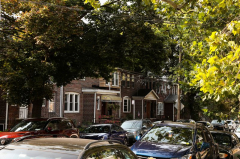By Lucia Mutikani
WASHINGTON (Reuters) -U.S. single-family homebuilding increased to a 10-month high in December, indicating that construction activity regained some momentum at the end of the year, though rising mortgage rates and a glut of new homes on the market could constrain recovery.
The report from the Commerce Department on Friday also showed permits for future construction of single-family homes rising last month to the highest level since last February. The housing starts and permits data are notoriously volatile. Still, it added to solid December retail sales in suggesting that the economy retained most of its strength in the fourth quarter.
With President-elect Donald Trump pledging broad tariffs and mass deportations of undocumented immigrants, policies that economists have warned would boost prices for building materials and lead to shortages of construction workers, the recent gains in homebuilding are likely unsustainable. Trump will be inaugurated next Monday.
“We expect a cocktail of building material tariffs and stricter immigration rules affecting construction labor under the new Trump administration, as well as the overhang of new homes for sale that has developed in some regions, to discourage builders from starting new projects in the second half of the year and into 2026, causing starts to tail off,” said Thomas Ryan, North America economist at Capital Economics.
Single-family housing starts, which account for the bulk of homebuilding, rose 3.3% to a seasonally adjusted annual rate of 1.050 million units last month, the highest level since February 2024, the Commerce Department’s Census Bureau said.
Data for November was revised higher to show homebuilding increasing to a rate of 1.016 million units from the previously reported pace of 1.011 million units.
Single-family homebuilding shot up 14.3% in the Northeast and accelerated 8.3% in the Midwest. It increased 7.1% in the West, but wa





